Related Research Articles
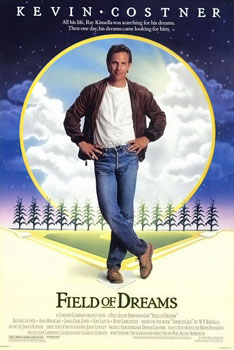
Field of Dreams is a 1989 American sports fantasy drama film written and directed by Phil Alden Robinson, based on Canadian novelist W. P. Kinsella's 1982 novel Shoeless Joe. The film stars Kevin Costner as a farmer who builds a baseball field in his cornfield that attracts the ghosts of baseball legends, including Shoeless Joe Jackson and the Chicago Black Sox. Amy Madigan, James Earl Jones and Burt Lancaster also star.
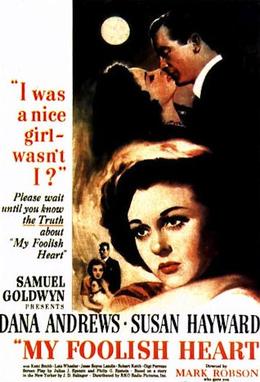
My Foolish Heart is a 1949 American romantic drama film directed by Mark Robson, starring Dana Andrews and Susan Hayward. It relates the story of a woman's reflections on the bad turns her life has taken.
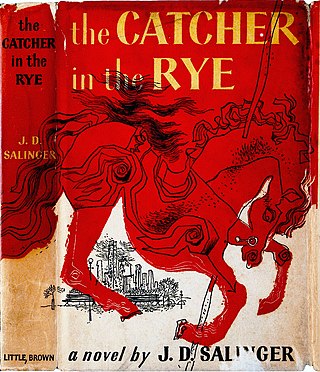
The Catcher in the Rye is a novel by American author J. D. Salinger that was partially published in serial form 1945–46 before being novelized in 1951. Originally intended for adults, it is often read by adolescents for its themes of angst and alienation, and as a critique of superficiality in society. The novel also deals with themes of innocence, identity, belonging, loss, connection, sex, and depression. The main character, Holden Caulfield, has become an icon for teenage rebellion. Caulfield, nearly of age, gives his opinion on a wide variety of topics as he narrates his recent life events.
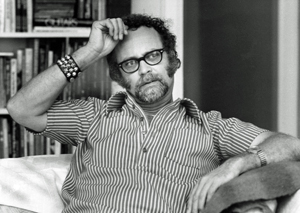
William Patrick "W. P." Kinsella was a Canadian novelist and short story writer, known for his novel Shoeless Joe (1982), which was adapted into the movie Field of Dreams in 1989. His work often concerned baseball, First Nations people, and Canadian culture.

Holden Caulfield is a fictional character in the works of author J. D. Salinger. He is most famous for his appearance as the lead character and narrator of the 1951 novel The Catcher in the Rye. Since the book's publication, Holden has become an icon for teenage rebellion and angst, and is considered among the most important characters of 20th-century American literature. The name Holden Caulfield was initially used in an unpublished short story written in 1941 and first appeared in print in 1945.

"For Esmé—with Love and Squalor" is a short story by J. D. Salinger. It recounts a sergeant's meeting with a young girl before being sent into combat in World War II. Originally published in The New Yorker on April 8, 1950, it was anthologized in Salinger's Nine Stories two years later.
"The Ocean Full of Bowling Balls" is an unpublished work by J. D. Salinger. It is about the death of Kenneth Caulfield, who later became the character Allie in The Catcher in the Rye.
"The Laughing Man" is a short story by J. D. Salinger, published originally in The New Yorker on March 19, 1949; and also in Salinger's short story collection Nine Stories. It largely takes the structure of a story within a story and is thematically occupied with the relationship between narrative and narrator, and the end of youth. The story is inspired by the 1869 Victor Hugo novel of the same name: The Man Who Laughs.
“Slight Rebellion off Madison” is an uncollected work of short fiction by J. D. Salinger which appeared in the 21 December, 1946 issue of The New Yorker.

Shoeless Joe is a 1982 magic realist novel by Canadian author W. P. Kinsella that was later adapted into the 1989 film Field of Dreams, which was nominated for three Academy Awards.
"Peterotica" is the 24th episode from season four of the animated comedy series Family Guy. The episode was originally broadcast on April 23, 2006, and was written by Patrick Meighan and directed by Kurt Dumas. The title of the episode is a portmanteau of "Peter" and "Erotica".
“A Boy in France” is an uncollected work of short fiction by J. D. Salinger which appeared in the 31 March, 1945 issue of The Saturday Evening Post.
The 1951 novel The Catcher in the Rye by J. D. Salinger has had a lasting influence as it remains both a bestseller and a frequently challenged book. Numerous works in popular culture have referenced the novel. Factors contributing to the novel's mystique and impact include its portrayal of protagonist Holden Caulfield; its tone of sincerity; its themes of familial neglect, tension between teens and society, and rebellion; its previous banned status; and Salinger's reclusiveness.
“Both Parties Concerned” is an uncollected work of short fiction by J. D. Salinger which appeared in the 26 February, 1944 issue of The Saturday Evening Post.
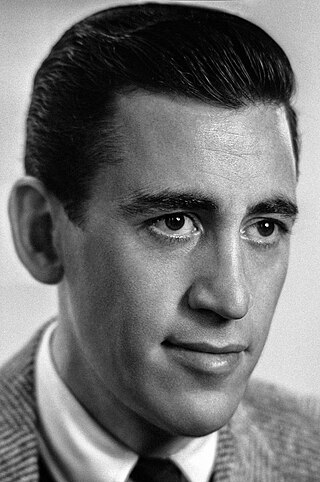
Jerome David Salinger was an American author best known for his 1951 novel The Catcher in the Rye. Salinger published several short stories in Story magazine in 1940, before serving in World War II. In 1948, his critically acclaimed story "A Perfect Day for Bananafish" appeared in The New Yorker, which published much of his later work.
John David California was the pseudonym used by Swedish book publisher Fredrik Colting when on 7 May 2009 he published 60 Years Later: Coming Through the Rye in the United Kingdom.

You're a Big Boy Now is a 1963 satirical novel by the British author David Benedictus. It was adapted into a 1966 film directed by Francis Ford Coppola, with the setting changed from London to New York City.
"The Last and Best of the Peter Pans" is an unpublished short story by J. D. Salinger.

Rebel in the Rye is a 2017 American biographical drama film directed and written by Danny Strong. It is based on the book J. D. Salinger: A Life by Kenneth Slawenski, about the life of writer J. D. Salinger during and after World War II. The film stars Nicholas Hoult, Zoey Deutch, Kevin Spacey, Sarah Paulson, Brian d'Arcy James, Victor Garber, Hope Davis, and Lucy Boynton.

Coming Through the Rye is a 2015 American coming-of-age drama film written and directed by James Steven Sadwith. It stars Alex Wolff and Stefania LaVie Owen as two teenagers who set out to find author J. D. Salinger, played by Chris Cooper. The film is based on Sadwith's own quest to find Salinger. It is Sadwith's directorial debut.
References
- ↑ Salzman, Jack (1991). New essays on the Catcher in the Rye . New York: Cambridge University Press. p. 4. ISBN 0-521-37442-1.
- ↑ Geddes, John. ""W.P. on J.D.: Kinsella talks about writing Salinger into 'Shoeless Joe'"". Macleans. Retrieved 2 September 2011.